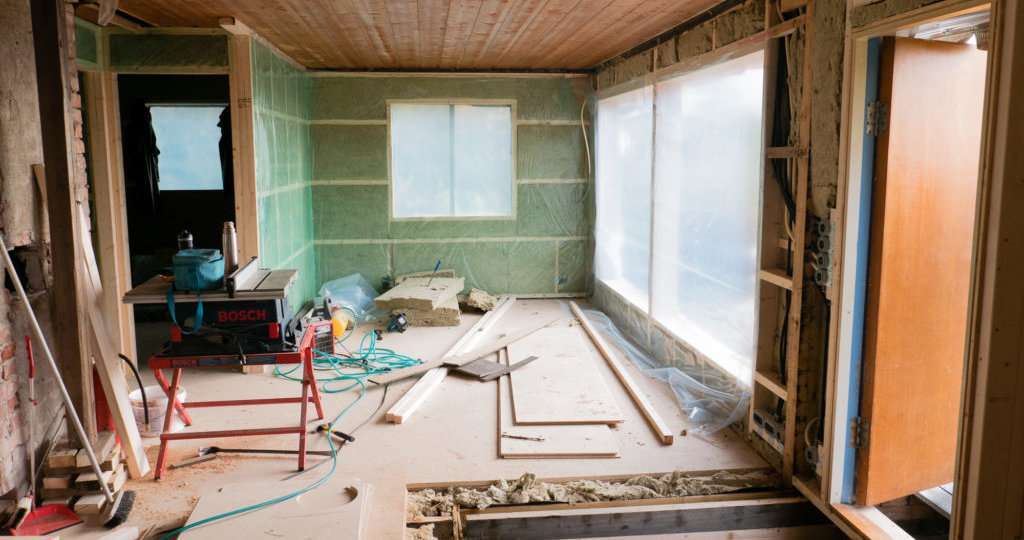Unlock your home’s hidden potential with a strategic home renovation loan – the smart way to fund your dream transformation without compromising your savings.
Understanding Home Renovation Financing Options
When it comes to financing home improvements in Kent, homeowners have several viable options at their disposal. The two primary choices are personal loans and home equity loans, each offering distinct advantages depending on your circumstances. Personal loans typically offer quicker approval processes and don’t require collateral, making them ideal for smaller renovation projects. On the other hand, home equity loans and HELOCs (Home Equity Lines of Credit) allow you to borrow against your property’s value, often providing larger sums at more competitive interest rates. Recent data shows that UK homeowners invested an average of £25,000 in house renovations in 2023, with renovation loans becoming an increasingly popular financing method.
Personal Loans: Fast-Track Your Renovation Dreams
Personal loans represent an excellent option for Kent homeowners looking to commence their renovation loan projects quickly. These unsecured loans offer several advantages:
- Quick approval process, often within 24-48 hours
- No collateral required, protecting your assets
- Flexible loan amounts ranging from £1,000 to £50,000
- Fixed interest rates and predictable monthly payments
- Terms typically ranging from 1 to 7 years
These loans are particularly suitable for immediate improvements like bathroom renovations, kitchen updates, or plastering work. Current market rates for personal loans in the UK start from 3.4% APR, though actual rates will depend on your credit score and financial situation.
Home Equity Loans and HELOCs: Leveraging Your Property’s Value
For Kent homeowners with substantial equity in their properties, home equity loans and HELOCs present compelling financing options. These secured loans typically offer:
- Lower interest rates compared to personal loans
- Higher borrowing limits based on available equity
- Potential tax benefits on interest payments
- Longer repayment terms, often up to 25 years
Recent statistics indicate that UK homeowners can typically borrow up to 85% of their property’s value, minus any existing mortgage balance. This makes these loans particularly attractive for major renovation projects like extensions or complete home remodels.
Making Smart Renovation Loan Decisions
Before committing to a renovation loan, it’s crucial to carefully evaluate your financial situation and project requirements. Consider these essential factors:
- Calculate your total project costs, including a 10-15% contingency buffer
- Compare interest rates and terms from multiple lenders
- Assess your monthly budget for loan repayments
- Consider the potential impact on your property’s value
- Review any early repayment charges or fees
Industry experts recommend keeping your total monthly debt payments below 40% of your income to maintain financial stability.
Strategic Home Improvements That Add Value
Investing your renovation loan wisely can significantly increase your property’s value. According to recent UK property market data, these improvements offer the best returns:
- Kitchen renovations: Up to 10% value increase
- Bathroom modernisation: 5-8% value increase
- Energy efficiency upgrades: 14% average value increase
- Extension or loft conversion: Up to 20% value increase
- High-quality plastering and finishing: Essential for any renovation project
The Application Process: From Decision to Funding
Securing a renovation loan involves several key steps:
1. Gather necessary documentation, including proof of income, bank statements, and property details
2. Research and compare lender options
3. Submit your application with required documentation
4. Undergo credit assessment and property valuation (if applicable)
5. Review and accept loan offer
6. Receive funds, typically within 5-10 working days
Most UK lenders now offer streamlined online application processes, making it easier than ever to secure renovation financing.
Maximising Your Renovation Loan
To ensure your renovation loan delivers maximum value, consider these essential strategies:
- Create a detailed project timeline and budget
- Work with reputable contractors who provide detailed quotes
- Prioritise structural improvements over purely cosmetic changes
- Consider energy-efficient upgrades that offer long-term savings
- Maintain clear communication with your contractors throughout the project
Planning Your Next Steps
Ready to transform your Kent property? Here’s your action plan:
- Assess your renovation needs and create a detailed project plan
- Calculate your required loan amount, including contingency
- Compare loan options from multiple lenders
- Gather necessary documentation for your application
- Consult with professional contractors for accurate quotes
- Consider speaking with a financial advisor for personalised guidance
Remember, a well-planned renovation loan can help you create your dream home while potentially increasing its value. With current UK interest rates remaining competitive, now might be the perfect time to start your home transformation journey.
FAQ
How much do you need to put down on a renovation loan?
3.5% minimum down payment option. Lower credit score requirements. No income limits. A $5,000 minimum on renovation costs.
How much can I borrow for my renovation?
The maximum you can borrow including your existing loan is up to 90 per cent of your property value.
What are the risks of a renovation loan?
Home improvement loans can build your credit and increase the value of your home if managed well, but they have serious drawbacks, like high fees, impacts to your credit and secured options that put your assets at risk.
How do most people finance home renovations?
A home equity loan allows you to borrow a fixed amount of money by tapping into your home’s equity, whereas a HELOC gives you access to a revolving line of credit. And, according to the US Census Bureau’s Housing Survey, approximately 50% of home equity loans are used for the purpose of home renovations.
Sources
[1] https://www.discover.com/personal-loans/home-remodel-repair-loans/
[2] https://www.rocketmortgage.com/learn/home-improvement-loans
[3] https://www.unfcu.org/loans/home-improvement/

